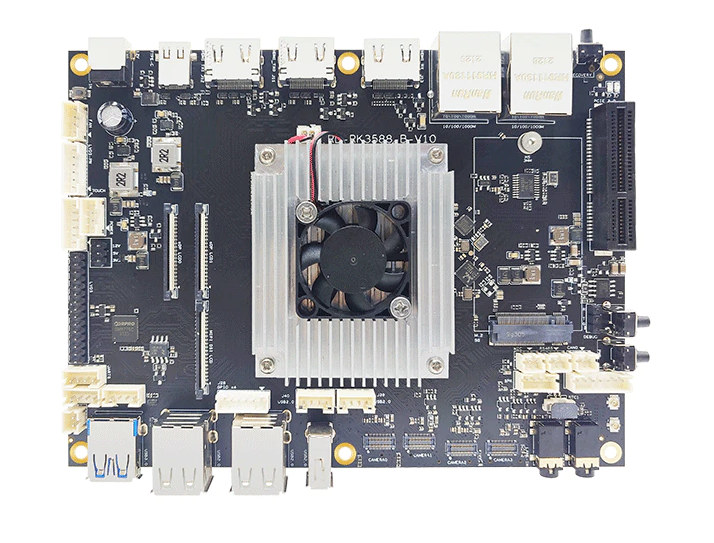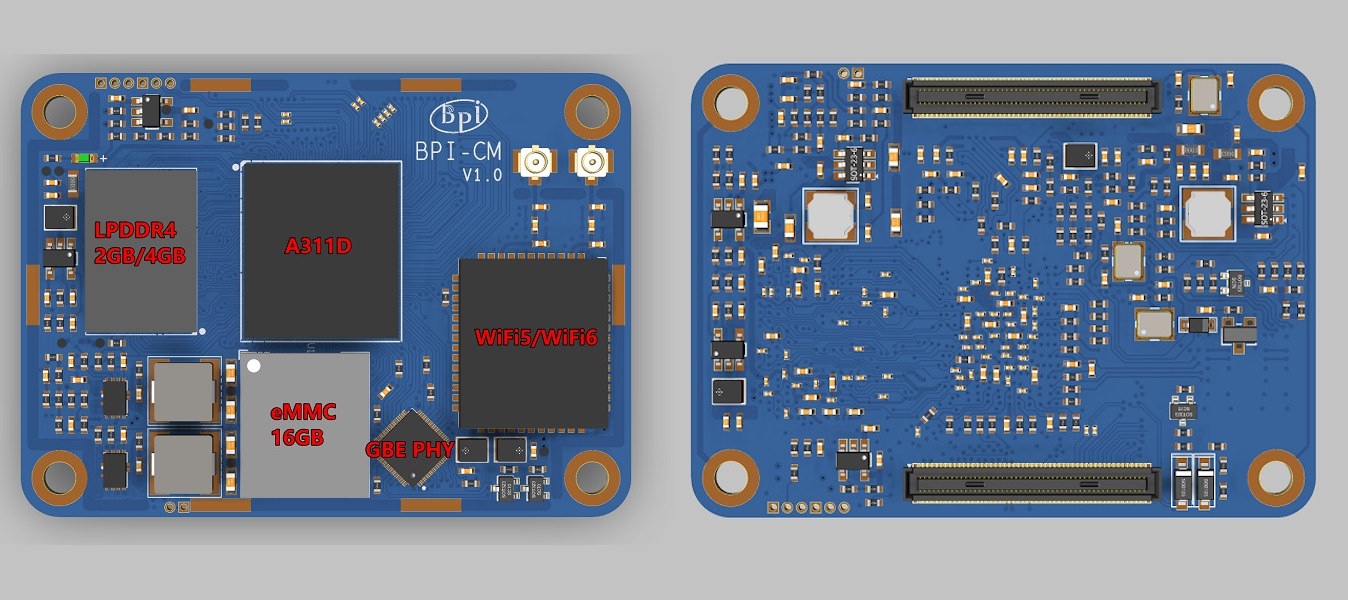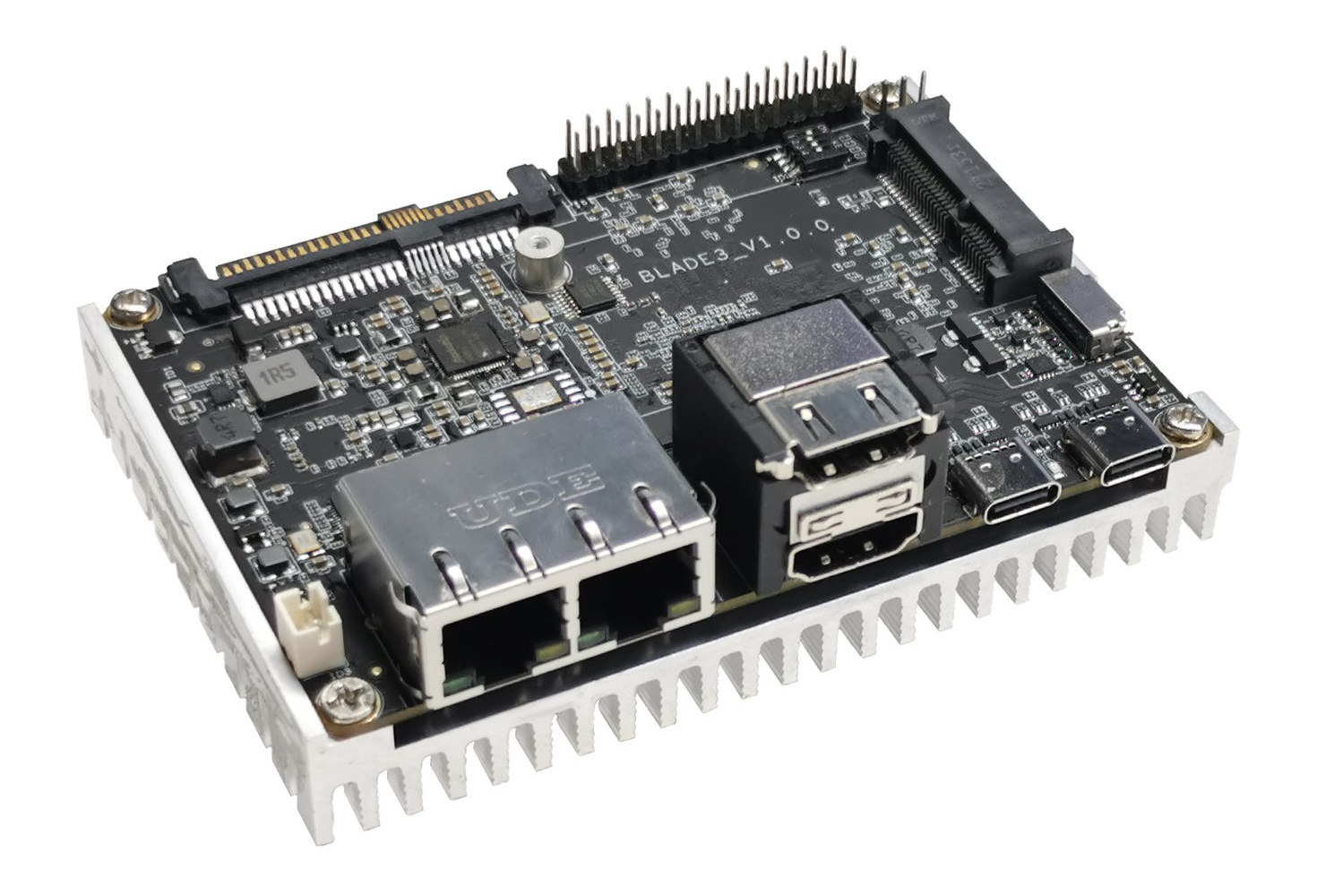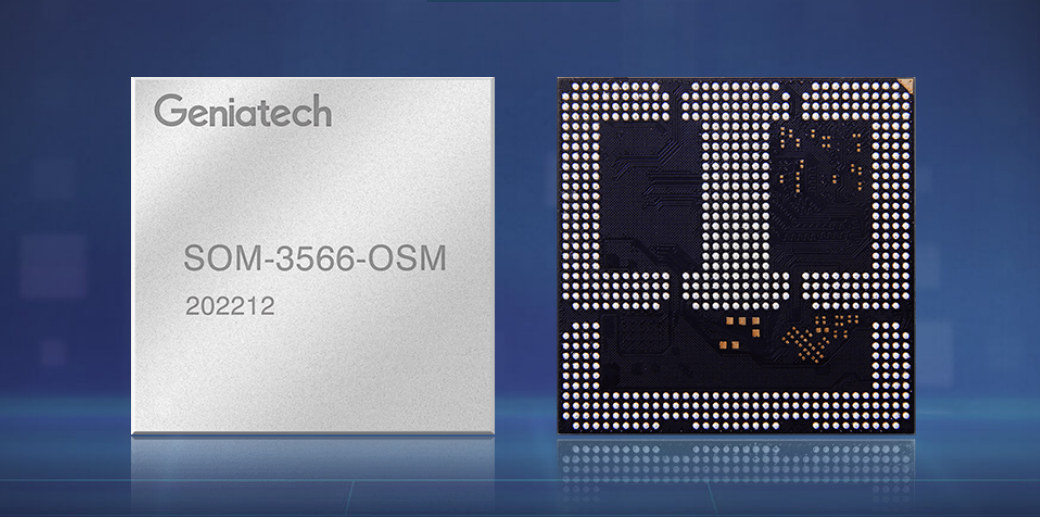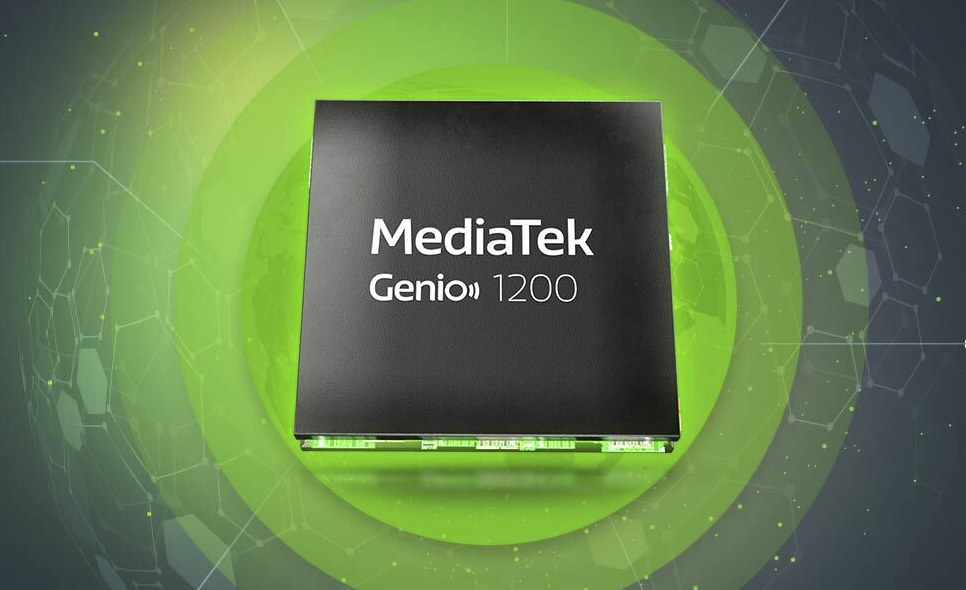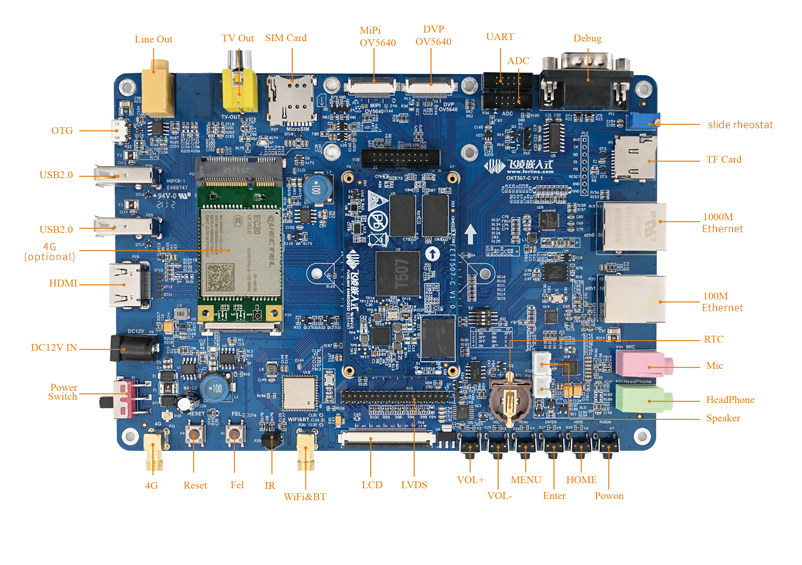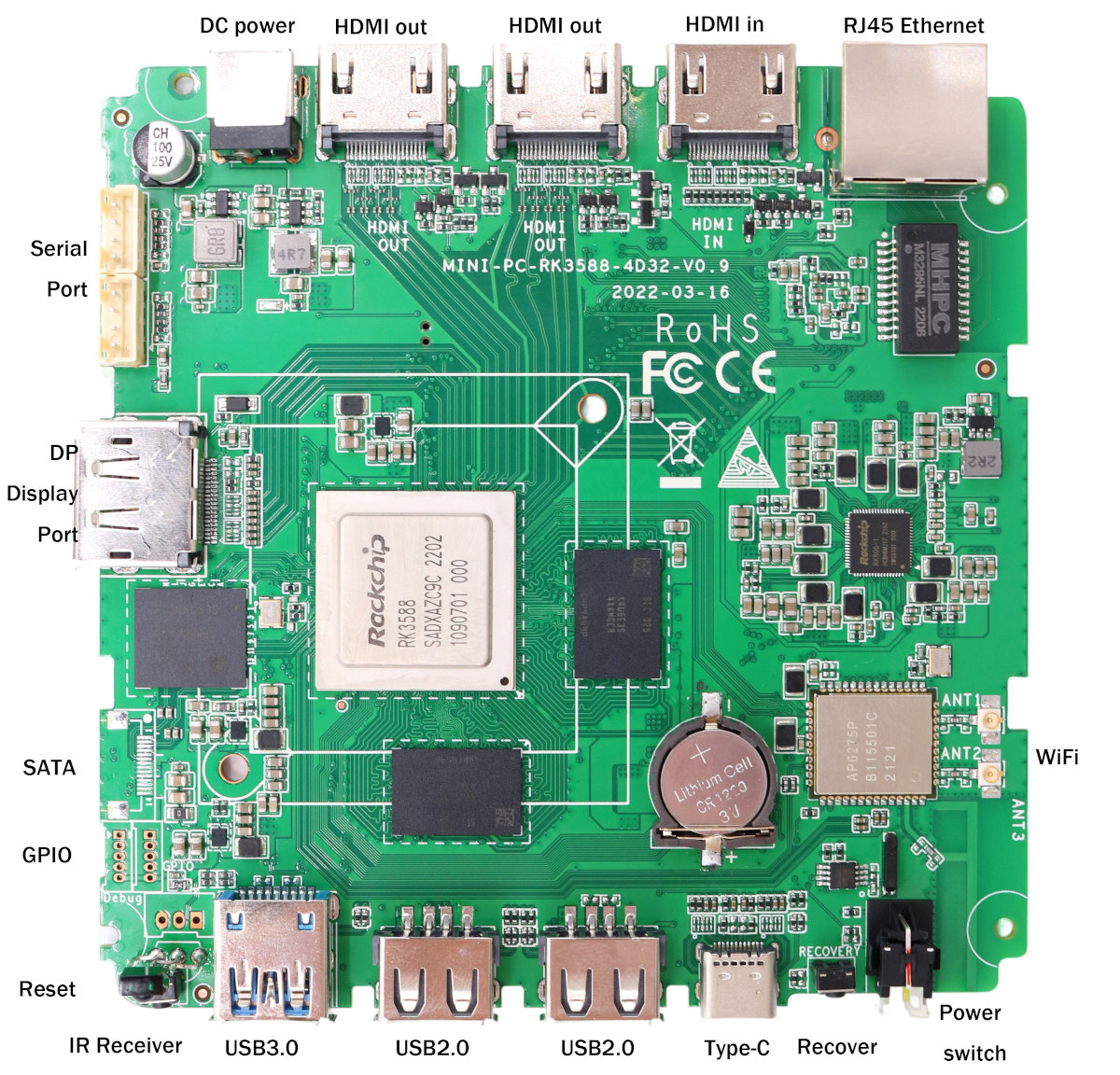We’ve already seen several Rockchip RK3588 modules with Firefly Core-3588J, Turing RK1, and Banana Pi RK3588_CV1, all with an edge connector to insertion into the carrier board. Rongpin RD-RK3588 system-on-module is a little different with four board-to-board connectors that enable a slightly more compact design, and should expose more I/Os than say a 314-pin MXM edge connector. The module ships with up to 16GB of RAM, 128 GB of storage, a Rockchip RK806-1 PMIC, and the company also offers a development kit with RD-RK3588-B baseboard fitted with the module for evaluation and early software development. RD-RK3588 board-to-board module RD-RK3588-C core module specifications: SoC – Rockchip RK3588 octa-core processor with 4x Arm Cortex-A76 cores @ up to 2.4 GHz, 4x Arm Cortex-A55 cores, Arm Mali-G610 MP4 GPU with support for OpenGL ES3.2, OpenCL 2.2, Vulkan1.1, 6 TOPS NPU, 48MP ISP, 8Kp60 video decoding, 8Kp30 video encoding System Memory – 4GB, 8GB, […]
$150 InkPalm Plus eReader features RK3566 SoC, 5.84-inch display
Xiaomi Moaan InkPalm Plus is a 5.84-inch eReader powered by the same Rockchip RK3566 processor found in Pine64 PineNote 10.3-inch Linux eReader, and currently selling for 999 CNY, or about $150 US, on JD.com after a 100 CNY discount. The device looks more like a smartphone than an eReader with its relatively small display, but there must be demand for this type of hardware since it succeeds the earlier InkPlam 5 eReader with Allwinner B300 quad-core Cortex-A7 SoC, plus an even smaller 5.2-inch display. Inkpalm Plus specifications: SoC – Rockchip RK3566 quad-core A55 processor @ 1.8 GHz with Arm Mali-G52 EE GPU, 0.8 TOPS NPU (AI accelerator) System Memory – 2GB RAM Storage – 64GB eMMC flash Display – 5.84-inch E Ink display with 1440×720 resolution (276 PPI), front light with 24 levels and adjustable color adjustment, 5-point capacitive touch Audio – Mono microphone Connectivity – Dual-band 802.11b/g/n/ac WiFi 5, […]
Raspberry Pi CM4 compatible module coming soon with Amlogic A311D CPU
Despite assurances by Eben Upton that there’s no supply shortage of Raspberry Pi CM4 modules for commercial and industrial customers, installations or projects requiring just a few modules may be out of luck. So alternatives are needed, and after seeing Rockchip RK3566-based SoMs compatible with Pi CM4, namely the Pine64 SoPine and Radxa CM3, Banana Pi is working on a Raspberry Pi CM4 compatible module powered by Amlogic A311D hexa-core Arm Cortex-A73/A53 processor. Banana Pi BPI-CM4 specifications: SoC – Amlogic A311D hexa-core processor with 4x Arm Cortex-A73 @ 2.0 GHz and 2x Arm Cortex-A53 @, Arm Mali-G52 MP4 (6EE) GPU, 5 TOPS NPU System Memory – 2GB/4GB LPDDR4 RAM Storage – 16GB eMMC flash (up to 128GB) Networking – Gigabit Ethernet PHY on-module, optional WiFi 5/6 module with on-board PCB antenna and external antenna 2x 100-pin high-density board-to-board connector (mostly) compatible with Raspberry Pi CM4 with 1x HDMI, 1x MIPI […]
Rockchip RK3588 Pico-ITX board launched with four-node cluster box (Crowdfunding)
The Mixtile Blade 3 Pico-ITX single board computer (SBC) powered by Rockchip RK3588 processor has now launched on Crowd Supply with either 8GB or 16GB RAM, and an optional four-node cluster box with a built-in PCIe switch designed to accommodate four Mixtile Blade 3 boards. The board also comes with up to 128GB of storage, two 2.5GbE interfaces, HDMI 2.1 output, HDMI 2.0 input, USB 3.2 Gen 1 USB Type-C ports, as well as a mini PCIe Gen 2 for expansion and a 30-pin GPIO header for expansion, as well as U.2 edge connector with 12V, PCIe x4 Gen 3 and SATA signals to interface with other Mixtile boards and build clusters. Mixtile Blade 3 specifications: SoC – Rockchip RK3588 octa-core processor with four Arm Cortex-A76 cores @ up to 2.4 GHz, four Arm Cortex-A55 cores, Arm Mali-G610 MP4 quad-core GPU with support for OpenGL ES3.2, OpenCL 2.2, Vulkan1.1, 6 […]
Geniatech launches OSM Size-L modules with Renesas RZ/G2L, Rockchip RK3566
Geniatech has introduced LGA system-on-modules compliant with the SGET OSM (Open Standard Module) Size-L standard and designed to be soldered directly on the carrier board. Two models have been launched with the SOM-G2L-OSM equipped with Renesas RZ/G2L Arm Cortex-A55/M33 processor, and the SoM-3566-OSM powered by a Rockchip RK3566 quad-core Cortex-A55 SoC. SOM-G2L-OSM module Specifications: SoC – Renesas RZ/G2L dual-core Cortex-A55 processor, Cortex-M33 real-time core, Arm Mali-G31 GPU, H.264 video encoder/decoder System Memory – 1GB RAM (2GB/4GB optional) Storage – 8GB eMMC flash (16GB/32GB optional) 662 contacts with Display – 1x MIPI DSI, 1x RGB Camera – 1x MIPI CSI Audio – I2S Networking – 2x Gigabit Ethernet USB – 1x USB OTG 2.0, 1x USB 2.0 host Serial – 2x CAN bus SDIO 3.0 Low-speed I/Os – 5x UART including debug, 2x I2C, 3x SPI, 3x PWM, 16x GPIO, 2x ADC Dimensions – 45 x 45 mm (OSM Size-L form […]
MediaTek unveils Genio 1200 premium AIoT processor with 4.8 TOPS NPU
MediaTek has introduced the Genio platform for AIoT devices, and unveiled the first chip of the Genio family with the Genio 1200 Octa-core Cortex-A78/A55 processor with a 4.8 TOPS NPU, 4K video support, and designed for premium AIoT products. The chip is manufactured with a 6nm processor, is said to consume less than 8W, supports dual 4Kp60 video output and up to 48MP @ 30 fps video capture, and WiFi 6, Bluetooth 5.2 and 5G connectivity can be added through add-in chips. Targets applications include Smart Home appliances, HMI, industrial IoT, robotics, and more. MediaTek Genio 1200 key features and specifications: CPU – Octa-core processor with four Cortex-A78 cores @ up to 2.2 GHz, four Cortex-A55 cores GPU – Arm Mali-G57 MC5 GPU VPU Encoding up to 4Kp60 with H.265/HEVC Decoding up to 4Kp90, AV1, VP9, HEVC, H.264 codecs supported AI accelerator – Dual-core Mediatek AI processor (APU) with INT8, INT16, […]
Allwinner T507 industrial processor powers automotive single board computer and module
Forlinx OKT507-C single board computer for automotive applications is powered by FETT507-C system-in-module equipped with Allwinner T507 industrial processor, 2GB RAM, and 8GB eMMC flash. Allwinner T507 offers the same features as Allwinner H616 for TV boxes with a quad-core Cortex-A53 CPU, a Mali G31 MP2 GPU, and the same I/Os, but the processor is AEC-Q100 certified, supports -40°C to +85°C temperature range, and Allwinner promises over 10 years of longevity. OKT507-C single board computer specifications: FETT507-C System on Module SoC – Allwinner T507 quad-core Cortex-A53 @ 1.5GHz with Arm Mali-G31 MP2 GPU with support for OpenGL ES 3.2/2.0/1.0, Vulkan1.1, OpenCL 2.0; (“2.25W power consumption under load”) System Memory – 2GB DDR3L Storage – 8GB eMMC flash Board-to-board connectors for carrier board connection Supply Voltage- 5 V Dimensions – 70 x 40 mm Temperature Range – -40°C to +85°C Carrier board Storage – MicroSD card slot Display I/F 1x LCD […]
Mekotronics R58 is a cost-optimized Rockchip RK3588 SBC going for $169 and up
Mekotronics R58 is a single board computer based on Rockchip RK3588 processor that will also be sold as a mini PC with an enclosure, and offers a cheaper alternative to the company’s R58X embedded mini PC with up to 16GB RAM, dual Gigabit Ethernet, dual SATA, etc… The R58 comes with fewer ports notably only one Gigabit Ethernet port, one SATA interface, and the RS485/RS232 terminal block and M.2 socket are gone, but it does add an extra HDMI output port, meaning it could support up to four independent displays. It still features up to 16GB RAM and 64GB eMMC flash. Mekotronics R58 specifications: SoC – Rockchip RK3588 octa-core processor with four Cortex-A76 cores @ 2.4 GHz, four Cortex-A55 cores @ 1.8 GHz, an Arm Mali-G610 MP4 GPU, a 6TOPS NPU, 8K 10-bit decoder, 8K encoder Memory & eMMC flash configurations 4GB LPDDR4x + 32GB eMMC flash 8GB LPDDR4x + […]


